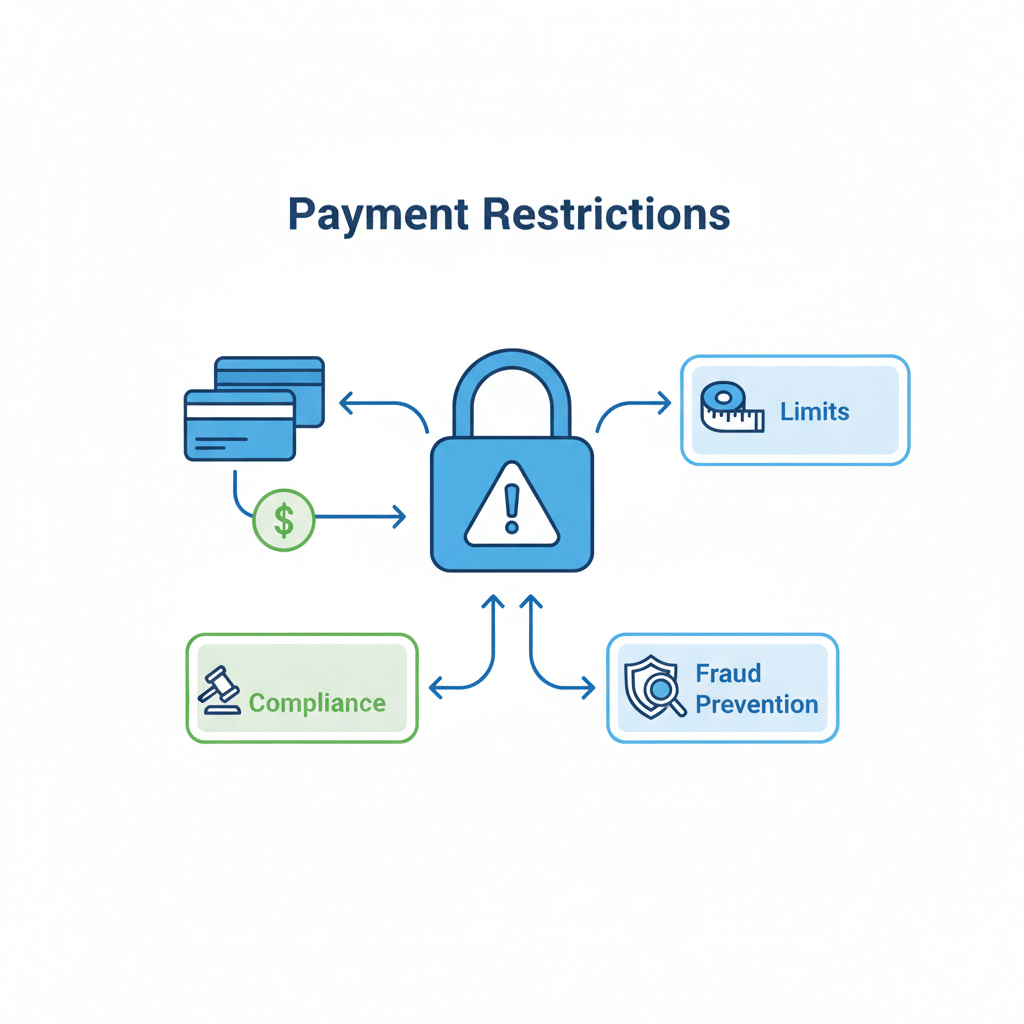What are Payment Restrictions?
Payment restrictions refer to rules or limitations placed on how and when payments can occur. These might be set by either party in a transaction—buyer or merchant—or imposed by external regulations. Restrictions can involve timing, transaction amounts, permissible payment methods, and other criteria.
In financial agreements (like bank loans or service contracts), payment restrictions often cover things like minimum or maximum payments, scheduled dividends or repayments, or prohibitions on certain transactions.
Related concepts include recurring transactions and payment gateways.
How do Payment Restrictions Work?
- Merchant-Defined Limits: A merchant can set minimum or maximum amounts per transaction, limit accepted payment methods, or enforce geographical or time-based constraints.
- Fraud & Risk Mitigation: Limits help reduce fraud and chargeback risk, and can include manual review of suspicious or large transactions.
- Authorization Holds: For high-value transactions, placing a temporary hold until verification or direct communication with the buyer.
- Compliance & Legal Restrictions: Legal or regulatory rules (such as PCI compliance, AML laws) may mandate certain restrictions. See more about PCI DSS compliance.
Why Use Payment Restrictions?
- To reduce risk from fraud, chargebacks, or unauthorized transactions (see also chargebacks).
- To ensure compliance with laws and regulations, including anti-money laundering (AML) guidelines.
- To manage payment methods and cash flow efficiently.
- To increase safety and trust in transactions for both merchant and buyer.
Common Types of Payment Restrictions
- Minimum or maximum payment amounts per transaction
- Limits on the frequency of payments
- Time-based constraints (specific hours or days)
- Restrictions by payment method (credit cards, bank transfers, digital wallets, etc.)
- Geographical restrictions
- Requirement for manual approval/review for high or risky transactions
Best Practices
- Clearly communicate all restrictions to customers (e.g. payment minimums, accepted methods, etc.).
- Provide a transparent process for reviews or exceptions.
- Use secure & compliant payment processors.
- Regularly monitor transaction patterns and adjust restrictions according to fraud risk. For reference, review Federal Reserve payment system resources.

